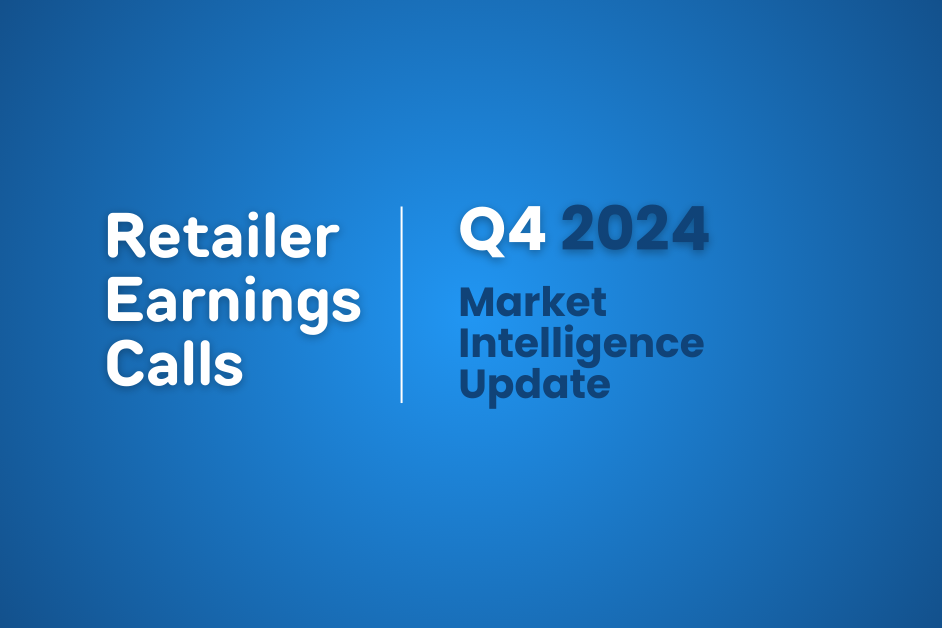Understanding how consumers shop can give retailers and manufacturers valuable insight into who their customers are and what they’re looking for in a shopping experience. These shopping behavior metrics provide an edge when it comes to winning shoppers in the market. And as we’ve seen throughout the pandemic, tumultuous times can alter the retail landscape and be an agent of change for buyer behavior. Because the OpenBrand survey is specifically designed to measure the key elements of consumer behavior that are not available anywhere else, users can go beyond market share and develop a clearer image of how consumers are shopping.
1. Number of Shoppers
What It Is:
This information lets you know whether a buyer was shopping on their own or if others were part of the decision-making process.
Why It Is Important:
Why is it important to consider how many people are shopping together? How consumers band together (or not) to shop for items will influence how these products are marketed. If a product is frequently purchased with the entire family unit’s input, for example, retailers will create marketing copy to appeal to all ages. OpenBrand’s data reveals that, on average, two-thirds of consumer electronics (CE) purchases are made by single shoppers. This has been true historically, and we have seen consistent year-over-year significant increases. Armed with this knowledge, manufacturers and retailers both can drill into the specific demographics to further refine their messaging to their target audience.
How It’s Collected:
This OpenBrand variable allows you to quantify not only how many people are involved in the purchase process as well as collecting demographic information about these purchasers.
What You Measure:
This OpenBrand variable allows you to quantify not only how many people are involved in the purchase process but also their age, PEW generation, and gender.
2. Why Behind the Buy
What It Is
“Why buy” can include many triggers for purchase. It is important to understand three critical decisions regarding a customer’s purchase journey:
- Why does a consumer buy at a specific store
- Why do consumers buy a specific brand
- Why does the consumer buy a specific product
These three questions work together to illuminate the psychology involved in the buyer journey. All three variables can influence the messaging used to target potential buyers
Why It Is Important:
These shopping behavior metrics are valuable to track. Armed with this information, retailers and manufacturers alike can pinpoint how they can best serve their ideal customers, as well as identify areas where their rivals are succeeding. For a more concrete example from “Why Buy Brand” specifically, during the height of the pandemic, there were three consecutive quarters with significant year over year decreases for competitive pricing being a main purchase driver for CE products. At the same time, there were also quarters that saw significant increases in consumers looking for specific features. There was also a minor, directional uptick in consumers who placed increased value on the product’s quality. To use TVs as an example, knowing that features and quality were highly valued during the pandemic gave manufacturers and retailers insight into how to pitch their products to consumers. Understanding their buyer’s behavior primes them for success. The data that’s highlighted in “Why Buy Store” can shed some light on other considerations. For example, another, though smaller, purchase driver for consumers has been the availability of financing. While many restrictions have lifted over the past year, the supply chain is still in a snarl, resulting in higher prices for consumers. Knowing that affordability is important can help retailers who offer financing options know how to pitch that particular offering.
How It’s Collected:
Since this metric is motivation-based, the only way to collect this information is to ask buyers. They are asked each of these three questions, with some options changed to reflect the typical needs for certain purchases.
What You Measure
For each of the three purchase motivators, the percentage of each response is calculated. These questions allow you to give weight to the different reasons behind a buyer’s choice and how that is changing over time. In conjunction with other variables, these will unlock greater insight into your available shopping behavior metrics.
3. Number of Brands/Stores Shopped
What It Is:
Not everyone goes into a consumer durables purchase with a plan. OpenBrand’s syndicated survey reveals how many stores and brands a consumer shops. This is measured for both online and offline purchases
Why It Is Important:
Most brands would prefer to be the only brand a buyer considers during their purchase. Similarly, a retailer would prefer to be the only location buyers shop. The most loyal buyers only consider a single brand or retailer, but there are often multiple stores or brands shopped. This data can be used together with the “Why Buy Brand” and “Why Buy Outlet” data discussed previously. For example, you may also look into “First Store Shopped” to determine if it’s important to be the first store or brand the consumer considers, and what other factors will come into play to help you win the sale. As seen in available data, since it was difficult to shop around due to pandemic restrictions, consumers were more likely to get the item they needed as soon as they could find it in stock (fewer stores shopped). Alternatively, they researched beforehand so that when they went to make their purchase, they knew exactly what they needed and where it was in stock. Understanding these nuances can help either way, tracking these shopping behavior metrics shows how consumer processes were streamlined.
How It’s Collected:
This question is asked of every consumer taking the OpenBrand survey for every product they indicate they’ve purchased.
What You Measure:
The information allows you to determine, on average, how many brands or stores consumers will shop before they make a decision and how that may be changing over time and for different categories.
4. Shop Online
What It Is:
Online shopping has taken root in nearly every consumer goods category – from groceries to consumer durables. To better understand how consumers are shopping for products, OpenBrand asks respondents if they shopped online for their consumer durables, regardless of whether they ultimately purchased online.
Why It Is Important:
The “Shop Online” variable is valuable both on its own and when used in conjunction with other shopping behavior metrics. The pandemic accelerated already increasing online shopping and buying behaviors. In fact, OpenBrand’s data can map a very clean year-over-year increase in online shopping for five quarters during the height of the pandemic. And while those numbers fell once the vaccine became widely available and restrictions were eased, the rate for online shopping is still higher than pre-pandemic.
How It’s Collected:
OpenBrand asks all respondents if they shopped online for each product they indicate they’ve purchased.
What You Measure:
With this variable, you’re identifying how often consumers turn to the internet before buying a product (whether they ultimately make that purchase in a brick-and-mortar store or online).
5. Online Activity
What It Is:
This information is used in conjunction with “Shop Online”. It breaks down how consumers are using the internet in their search for a specific product, from doing general research to looking for sales and reviews.
Why It Is Important:
The more that consumers turn to the internet as a key component of their shopping strategy, the more important it becomes to understand how they’re using the internet. Again, combined with other shopping behavior metrics, you can get a clearer understanding of your buyers. In our CE example, we see a significant increase in searches for a website to shop at during the pandemic. Due to store closures and supply chain disruptions, consumers needed to be able to find places that were open to make a purchase in the first place.
How It’s Collected:
OpenBrand asks this question of all respondents for each product they indicate they’ve purchased. The question allows for multiple responses so you can get a full view of how consumers are shopping online.
What You Measure:
This allows you to give specific weight to the different activities shoppers engage in when searching online for product and retailer information.
Conclusion
Understanding how to use shopping behavior metrics can open up a deeper level of insight into both your market and your buyers. Using the data found in the metrics above alone or together as part of a more refined data set will allow you to craft a better experience that’s more closely aligned to how your consumers are making decisions. If you’re ready to start looking into OpenBrand for more than market share, contact us today to learn how to navigate the data available at your fingertips.
Related blogs
Unlock the Power of Real-Time Data & AI in Retail Success: White Paper
Have your data — and use it too. Accessing data in retail is one thing. Knowing what to do with it is another. Market data is not meant to…
Related blogs
Consumer Price Index: Durable and Personal Goods | March 2025
This April 2025 edition of the OpenBrand CPI offers insights into March price movements and trends…
3 Ways OpenBrand is Revolutionizing Retail Intelligence
In today’s hyper-competitive retail environment, actionable data is the lifeblood of strategic…
Consumer Price Index: Durable and Personal Goods | February 2025
This March 2025 edition of the OpenBrand CPI offers insights into February price movements and…
Home Depot vs. Lowe’s Earnings Call Reviews: Q4 2024 Market Intelligence
Earnings reports provide a valuable snapshot of a retailer’s financial performance, offering…





